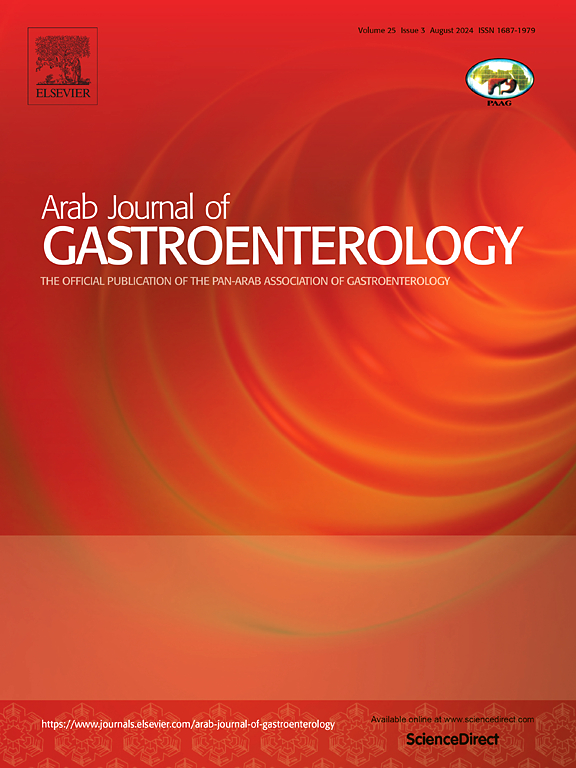粘附侵袭性大肠杆菌 LF82 破坏了 Caco-2 单层的紧密连接。
IF 1.1
4区 医学
Q4 GASTROENTEROLOGY & HEPATOLOGY
引用次数: 0
摘要
背景和研究目的:粘附侵袭性大肠杆菌(AIEC)在IBD(炎症性肠病)患者中富集,但AIEC在肠上皮屏障中的作用和机制尚未明确。我们在体外评估了AIEC菌株大肠杆菌LF82的作用,并研究了Th17在这一过程中的作用:在与 AIEC 共同作用后,通过上皮阻力测量监测上皮屏障的完整性。屏障的通透性通过TEER(跨上皮电阻)和粘膜到上皮的通透率进行评估。上皮内紧密连接蛋白 ZO-1 和 Claudin-1 的存在是通过免疫荧光和 Western 印迹分析确定的。通过酶联免疫吸附试验(ELISA)检测细胞培养上清液中的细胞因子:结果:在肠道屏障模型中,AIEC感染以时间和剂量依赖的方式降低了TEER,增加了荧光黄从粘膜到粘膜的通量。AIEC感染降低了ZO-1和claudin-1的表达并改变了其分布。结论:AIEC 菌株大肠埃希氏菌(E.C. Coli E. LF)对肠道屏障的作用是有时间和剂量依赖性的:结论:大肠杆菌 AIEC 菌株 LF82 增加了肠道上皮屏障的通透性,破坏了肠道上皮屏障的紧密连接,揭示了 AIEC 在炎症反应中的加重作用。本文章由计算机程序翻译,如有差异,请以英文原文为准。
Adherent-invasive Escherichia coli LF82 disrupts the tight junctions of Caco-2 monolayers
Background and study aims:
Adherent invasive Escherichia coli (AIEC) are enriched in IBD (inflammatory bowel disease) patients, but the role and mechanism of AIEC in the intestinal epithelial barrier is poorly defined. We evaluated the role of the AIEC strain E. coli LF82 in vitro and investigated the role of Th17 in this process.
Material and methods:
After coincubation with AIEC, the epithelial barrier integrity was monitored by epithelial resistance measurements. The permeability of the barrier was evaluated by TEER (trans-epithelial electrical resistance) and mucosal-to-serosal flux rate. The presence of interepithelial tight junction proteins ZO-1 and Claudin-1 were determined by immunofluorescence and western blot analysis. Cytokines in the cell culture supernatant were assayed by enzyme-linked immunosorbent assay (ELISA).
Results:
AIEC infection decreased TEER and increased the mucosal-to-serosal flux rate of Lucifer yellow in the intestinal barrier model in a time- and dose-dependent manner. AIEC infection decreased the expression and changed the distribution of ZO-1 and claudin-1. It also induced the secretion of cytokines such as TNF-α and IL-17.
Conclusion:
AIEC strain E. coli LF82 increased the permeability and disrupted the tight junctions of the intestinal epithelial barrier, revealing that AIEC plays an aggravative role in the inflammatory response.
求助全文
通过发布文献求助,成功后即可免费获取论文全文。
去求助
来源期刊

Arab Journal of Gastroenterology
Medicine-Gastroenterology
CiteScore
2.70
自引率
0.00%
发文量
52
期刊介绍:
Arab Journal of Gastroenterology (AJG) publishes different studies related to the digestive system. It aims to be the foremost scientific peer reviewed journal encompassing diverse studies related to the digestive system and its disorders, and serving the Pan-Arab and wider community working on gastrointestinal disorders.
 求助内容:
求助内容: 应助结果提醒方式:
应助结果提醒方式:


